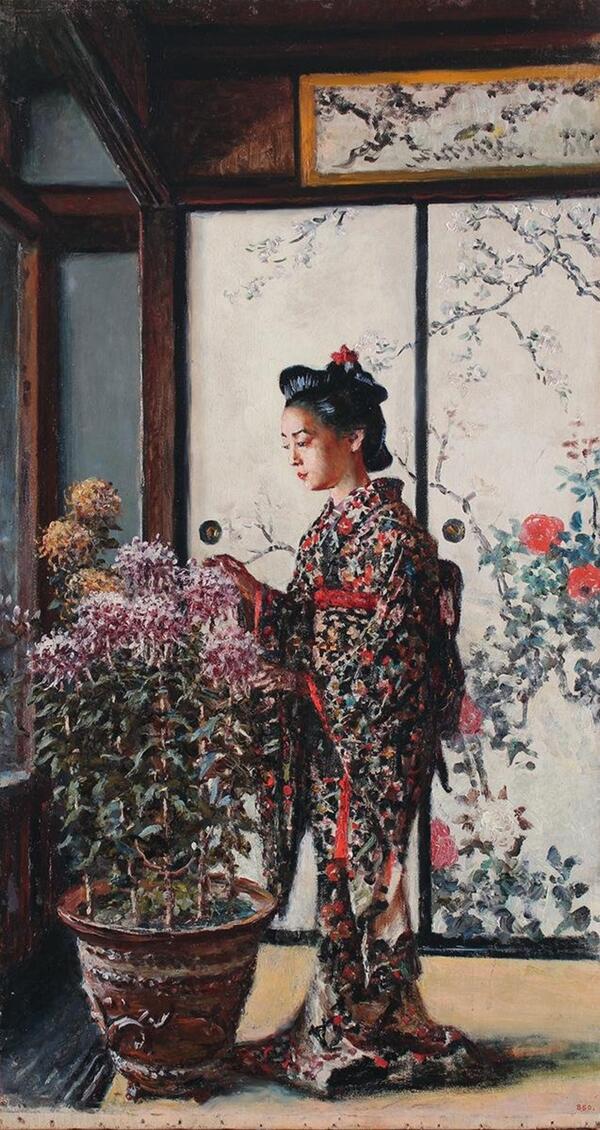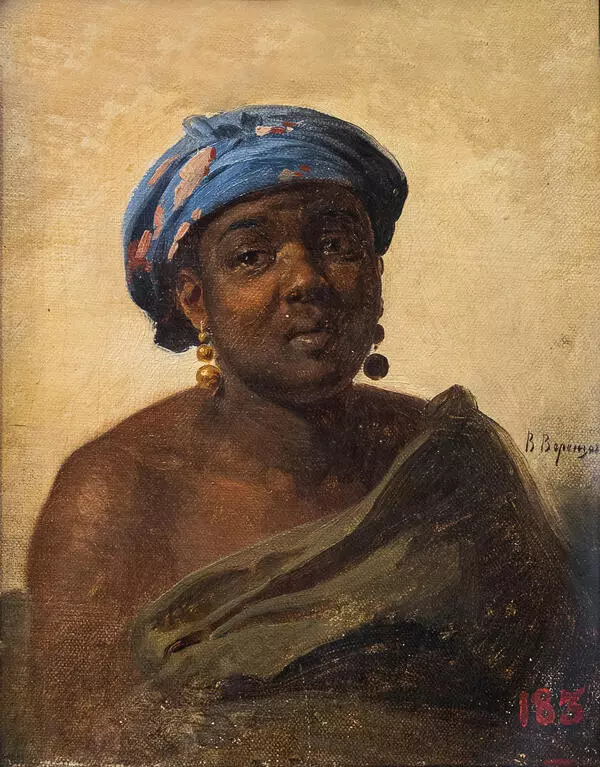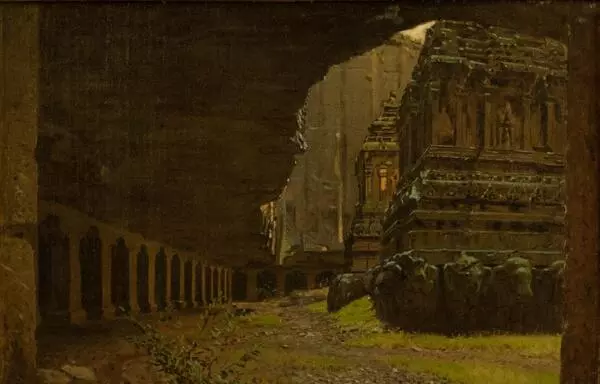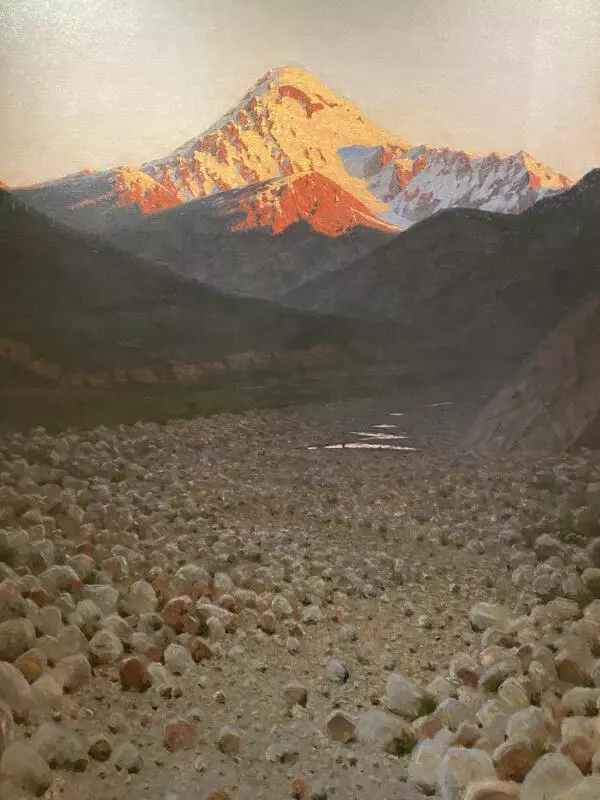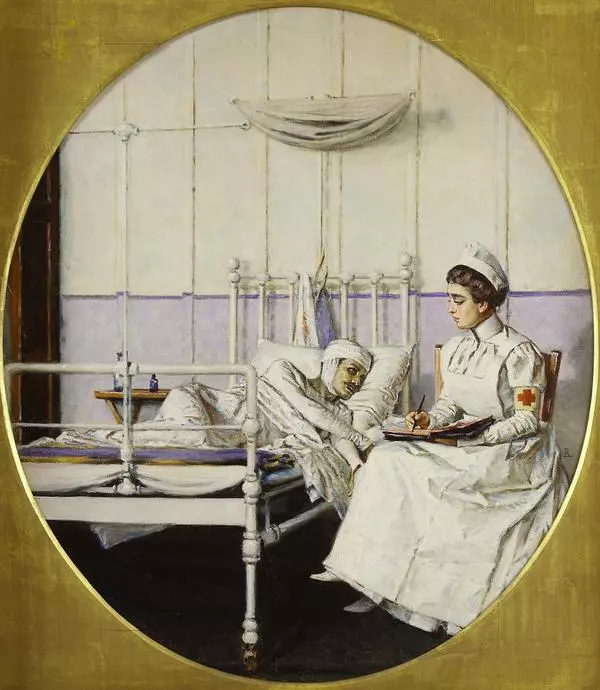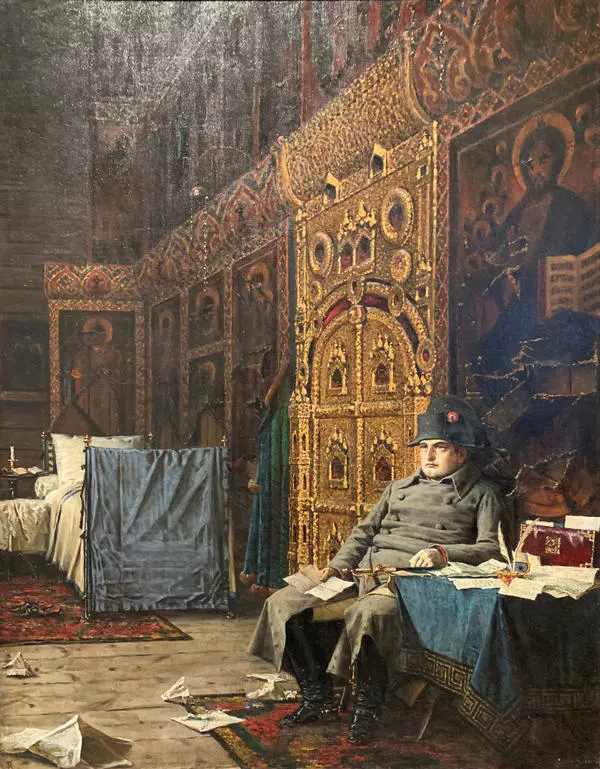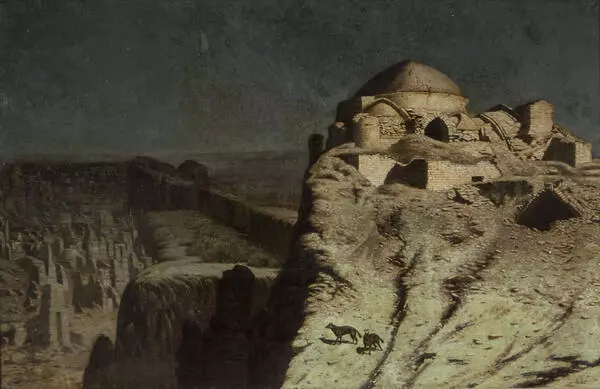Vasily Vereschagin was born in 1842 into a family of landed aristocracy. At the age of nine he was dispatched to the cadet naval school where his painting talent revealed itself for the first time to gradually develop later in a drawing school. Upon graduation from the naval school in 1860, he enrolled in St. Petersburg School of Arts and in the same year tried his hand in literary writing.
As early as 1873, Vereschagin exhibited his paintings in the Crystal Palace, London, and a year later, his solo exhibition was held in St. Petersburg, following which the artist was slammed for having no love for his motherland. Emperor Alexander II attended the exhibition and allegedly expressed ‘strong disappointment’. However, a month later, the Academy of Arts conferred the title of professor to Vereschagin, bitter attacks notwithstanding. The artist promptly declined the honor.
Even though Vereschagin is widely known as Russia’s major battle painter, the Rybinsk collection contains a painting that reveals a completely different side of his artwork: the Egyptian study of 1883 White Horse has no trace of any battle action. Like Vereschagin’s other paintings, this one is full of authentic historical detail. In his relentless search of objectivity, Vereschagin essentially crossed the world creating truly realistic paintings.
The central element of the composition is a white horse with yellow mane and yellow-red tail. The horse’s gear consists of a red bridle and raspberry-red saddle. An Arab man holding it by the bridle wears traditional garments of brown-pink breeches, a loose-fitting shirt and an orange turban. The horse and the rider are shown against the background of a stony desert for which Vereschagin used yellow, grey and brown colors with occasional addition of some green shades.
One of the biggest technical challenges in the classical-style painting is to obtain pure white color from other paints. Vereschagin brilliantly met the challenge: without using a simple white coloring he managed to achieve a deep unadulterated white color for the horse. Generally, in this study the artist used full and vibrant colors, which, nonetheless, do not eclipse the impeccably correct anatomical details.
As early as 1873, Vereschagin exhibited his paintings in the Crystal Palace, London, and a year later, his solo exhibition was held in St. Petersburg, following which the artist was slammed for having no love for his motherland. Emperor Alexander II attended the exhibition and allegedly expressed ‘strong disappointment’. However, a month later, the Academy of Arts conferred the title of professor to Vereschagin, bitter attacks notwithstanding. The artist promptly declined the honor.
Even though Vereschagin is widely known as Russia’s major battle painter, the Rybinsk collection contains a painting that reveals a completely different side of his artwork: the Egyptian study of 1883 White Horse has no trace of any battle action. Like Vereschagin’s other paintings, this one is full of authentic historical detail. In his relentless search of objectivity, Vereschagin essentially crossed the world creating truly realistic paintings.
The central element of the composition is a white horse with yellow mane and yellow-red tail. The horse’s gear consists of a red bridle and raspberry-red saddle. An Arab man holding it by the bridle wears traditional garments of brown-pink breeches, a loose-fitting shirt and an orange turban. The horse and the rider are shown against the background of a stony desert for which Vereschagin used yellow, grey and brown colors with occasional addition of some green shades.
One of the biggest technical challenges in the classical-style painting is to obtain pure white color from other paints. Vereschagin brilliantly met the challenge: without using a simple white coloring he managed to achieve a deep unadulterated white color for the horse. Generally, in this study the artist used full and vibrant colors, which, nonetheless, do not eclipse the impeccably correct anatomical details.


